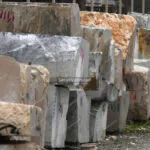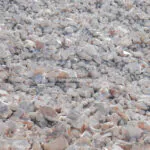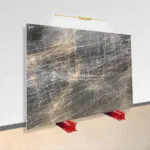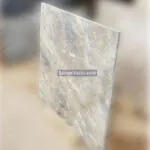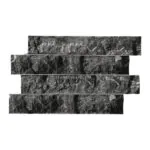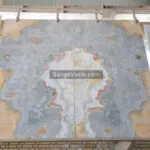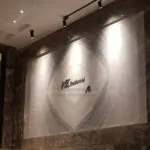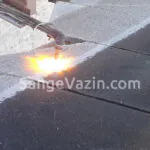Key Terms In The Stone Industry
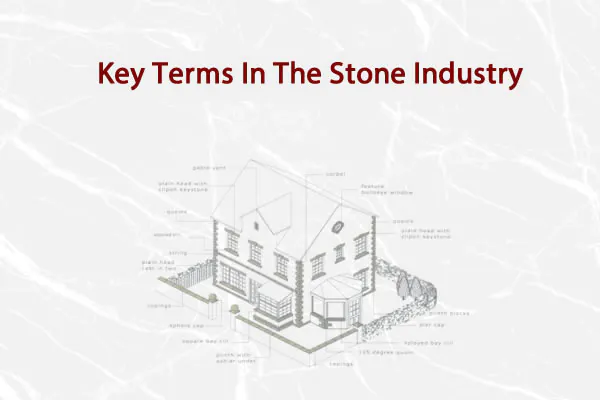
In this article, we attempt to explain the Key Terms In The Stone Industry and give a succinct and clear definition.
This article includes the following:
Table of Contents
Terms related to size
Stone Blocks
Large chunks of stone that are extracted from quarries are frequently shaped like cuboids or cubes and they might not have a regular geometric shape as a result of the method of extraction. These stones are called stone blocks and stone-cutting factories receive these stones for processing and cutting.
Slate Stone
Slate stones are natural stones (disharmonious stones), and they are formed by cutting larger stones into irregular shapes. These stones can be used to make road walls, tunnels, pathways as well as the outside walls of buildings and the flooring of walkways.
Slab Stone
Large chunk of cut stone, at least one meter long and one meter wide, with a thickness of 18 to 30 mm. Slab dimensions are usually 170* 280 cm.
Stone Processing And Installation Terms
Book-matched Slab
Placing two slab stones (large stones that are one solid piece) so that the streaks and the way they look together create a perfect symmetry. It is sufficient to process cut pieces on the opposite side for this purpose.
Four-Matched Slab
Slab stones (large stones that are one solid piece) are arranged with two on top and two below, and their streaks and looks make a beautiful symmetry that is centered in the middle. It is sufficient to process cut pieces on the opposite side for this purpose.
More information: Book-matched & four-matched slab
Wavy And Waveless
When cutting sedimentary stones like travertine, the layer will be apparent and will take on a wavy appearance as a result of the variety of layers stacked on top of one another. Now, if the layers are cut in a way that is in line with the layers, these layers are hidden and the stone is waveless.
Twist Wave
The term twist wave refers to the wave shape that occurs in the stone when the waves in the stone do not extend on the same side and are twisted based on the sedimentation processes.
Shelf Angle
It is a series of methods for putting stone on a facade in which the stone is glued to the mortar on the back with unique metal pieces. With this method, the danger that the stone may fall from the facade due to weather conditions like cold, heat, or earthquakes will be greatly decreased.
Ashlar Stone
These stones have a thickness of about 4 cm and a non-flat surface that is made by special axes, and they form a stunning, natural state.
Bush Hammered Stone
Bush hammered, sometimes known as bush needle or sandblast, is a method of stone surface processing. In this process, a specialized diamond–tipped brush is installed on the polishing machine and circulates on the stone’s surface in both rotary and hammering ways, processing the stones surface uniformly (into a bulgy needle–shaped).
Stone Flaming
To flame a stone means putting a high–pressure flame on its surface to make friction on its surface.
Ridging
The process of using flame for turning a polished surface (stone) into a surface with high friction or creating a groove or sandblast on the surface.
Leathered
A type of stone finish in which the pores on the surface arent filled with resin. Also, the surface won`t be polished.
Terms Of Structure – Appearance Of Stone
Color Contrast
Play of color refers to the variation in color tonality within the general color of a sort of stone or plaque. Typically, this occurs in the form of the main color of the stone background.
Porosity
Pores or holes inside the stone, which are found in abundance in travertine. It is a way to measure the amount of holes in natural stone. Compared to marble and onyx, travertine stones have an abundance of this quality. The porosity of granite is almost nil.
Water Absorption
Water absorption is a measurement used to find out how much water a stone will absorb while submerged in water. This measurement is expressed as a percentage of the stone`s weight when dry. Water absorption is different in various stones and generally, sandstone and limestone absorb more water than granite stones, which absorb less water overall.
Abrasion Resistance
Abrasion resistance refers to the stone’s hardness and resistance to abrasion.
Bending Resistance
Bending resistance is the measure of a stone’s potential to bend without breaking.
Stone Efflorescence
Stone efflorescence is the term used to describe the deposition of salt and mineral salts caused by the evaporation of mortar water and the stone’s composition behind the stone.
More information: Stone efflorescence
Questions and answers from the summary of the article
Terms of structure – appearance of stone
Color contrast – porosity – water absorption – abrasion resistance – bending resistance –stone efflorescence
Stone processing and installation terms
Book-matched – four-matched – flaming – ridging – ashlar stone – bush hammered – wavy and waveless – twist wave
Terms related to size
Tile – slab – shelf angle – slate stone
Publish on:
September 12, 2023
Updated on:
March 8, 2024
